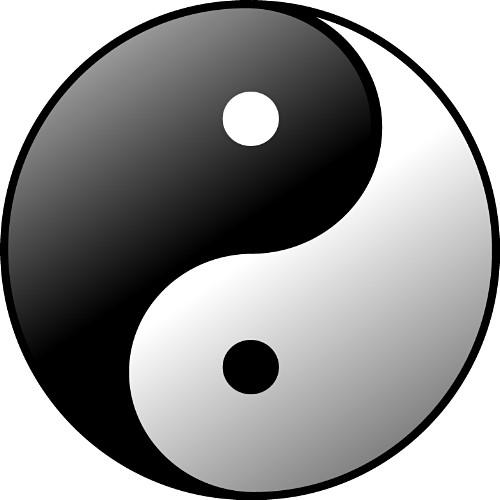
Balance Is Everything, Part 1
Amateur chess players are always discussing their style, or claiming that tactics is more important than anything else, or arguing that drug testing is important in top level events, or insisting that Bobby Fischer was actually a Reptilian alien, or claiming that chess was initially brought to earth by the Little Grays over two thousand years ago (it was actually the Tall Whites!), or doing their best to prove that Paul Morphy was black (a gentleman in Los Angeles pushed this theory for many years, even selling T-shirts with a Paul Morphy Was Black logo). Such conversations keep things snappy and fun, but do little for one’s playing strength.

Though you can enjoy chess if you fully embrace “beat-down-tactics” or “Shaolin-boa-chess-style” (positional chess designed to smother your opponent via going after a space advantage), the simple fact of the matter is you’ll get more from chess and become much stronger if you seek some degree of balance. This doesn’t mean you have to push away your stylistic preference, but it does mean you have to become as conversant as possible with every phase of the game. For example, Tal always strove for active play, tactics, and wild attacks, but to win the World Championship from Botvinnik he needed to mix those things with solid endgame play and world-class positional understanding. And it’s not just Tal! Virtually every IM or GM can show top quality positional and tactical highlights in their games.
Here’s a position from one of Anatoly Karpov’s games. He’s a positional player, right? Yet, even a positional genius has to obey the board, and if the board says, “Sacrifice!” then he has to sacrifice. So, if Tal can play quiet positional chess and Karpov can go berserk and sac the house, shouldn’t you consider emulating them?
To Sacrifice or Not to Sacrifice
Karpov, in his excellent book My Best Games (1978), had this to say concerning this position:
“Some of the solutions I select are not the simplest, however, but the most purposeful. If I have several different continuations at my disposal, my choice depends in large part on who my opponent is. For example, against Korchnoi or Tal I prefer simple positions that may not be to their artistic tastes, and against Petrosian I choose something more complicated. But if I realize that there is only one correct route to take, then I have no choice and I take that route.”
A Quick Jump Away From Our Topic
During my travels in China (2004) I actually went to the Shaolin Temple (which is in the middle of nowhere). I fully expected to see David Carradine there, welcoming me. But no, instead it was a holiday and one million people were crushing each other as they checked out the Temple (NOT a good experience!). Extremely uncomfortable, I became bad tempered and made the epic mistake of (loudly) telling a friend (who was a big Dragon Sicilian devotee) that the Chinese Dragon (1.e4 c5 2.Nf3 d6 3.d4 cxd4 4.Nxd4 Nf6 5.Nc3 g6 6.Be3 Bg7 7.f3 0-0 8.Qd2 Nc6 9.Bc4 Bd7 10.0-0-0 Rb8 – this system was quite young at this point and nobody knew if it would hold up theoretically) looked a bit strange, and I wouldn’t be surprised if it eventually came crashing to the ground.

Do These Two Dragons Look Similar?
Unfortunately the monks misunderstood and thought I was talking about their iconic monster lizard! My punishment was most unpleasant. The two photos below show me wishing I had kept my mouth shut!


Anyway, sorry about the digression! Where was I? Oh yes! Seeking balance in chess.
This two-part article will show (in puzzle form) how World Champions can beat you with a tactical hammer or positional silk (you will have to figure out if it’s a positional or tactical solution).
Though I always implore people to look at the hidden comments in the puzzles, in this case you REALLY should do so since I end each puzzle with the positional and tactical points.
Puzzles
[Most of the puzzles offer invisible prose and variations. After you try and solve the puzzle, click SOLUTION followed by MOVE LIST so you can see all the hidden goodies.]
Puzzle 1:
Puzzle 2:
Puzzle 3:
Puzzle 4:
Puzzle 5:
Puzzle 6:
In our next puzzle find a silky, pure positional move that should be something you would play in your sleep.
Puzzle 7:
Puzzle 8:
Puzzle 9:
Puzzle 10:
Puzzle 11:
Puzzle 12:
RELATED STUDY MATERIAL
- Watch GM Roman Dzindzichashvili's video series Greatest Chess Minds: Anatoly Karpov - Part 1, Part 2;
- Watch IM Keaton Kiewra's video The Fighting Dragon - Part 7: The Chinese Dragon;
- Read IM Jeremy Silman's article series Lessons on Positional Play - Part 1, Part 2, Part 3, Part 4;
- Practice your tactics with our Tactics Trainer, always a good idea!

